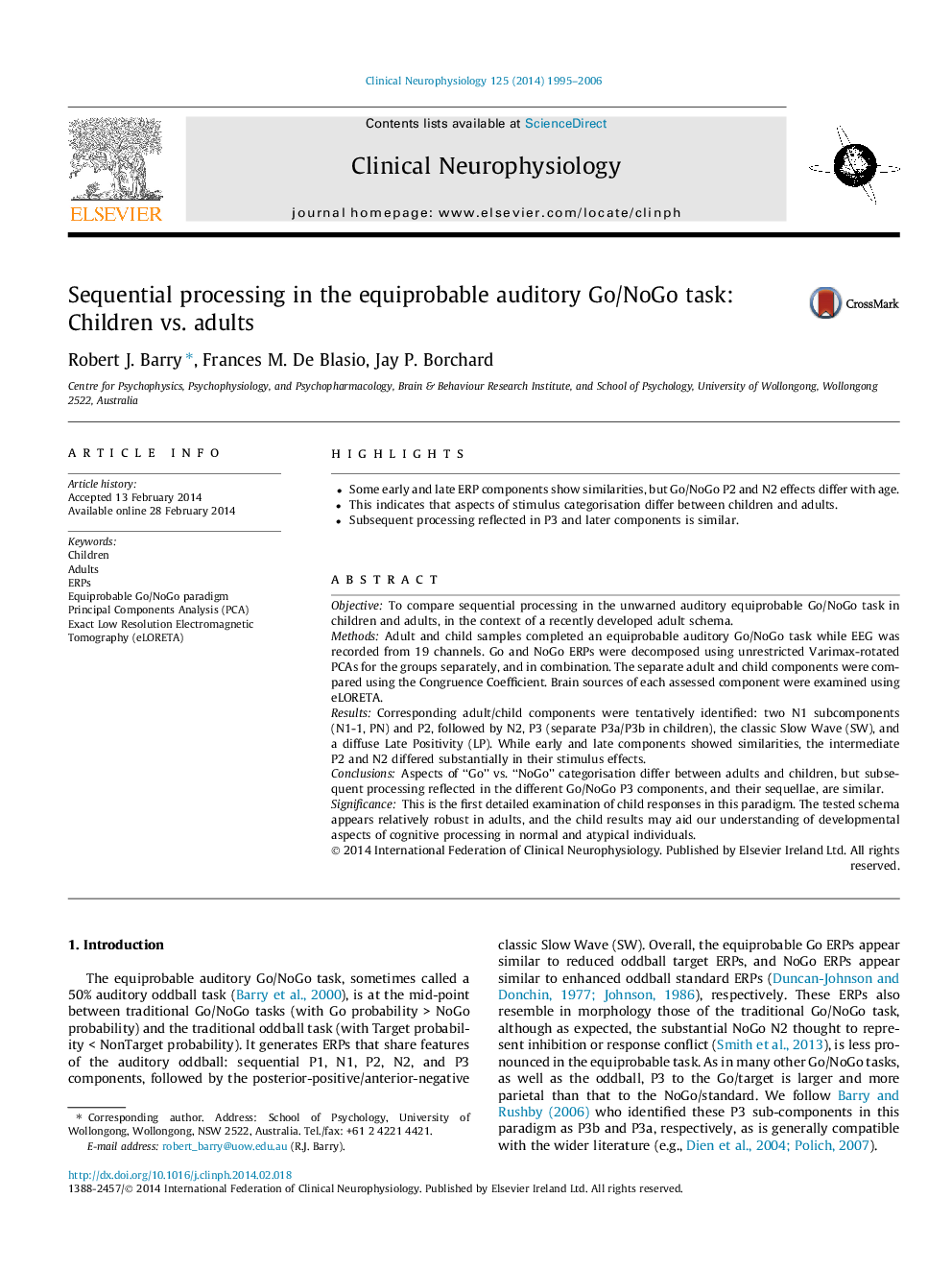| Article ID | Journal | Published Year | Pages | File Type |
|---|---|---|---|---|
| 3042701 | Clinical Neurophysiology | 2006 | 12 Pages |
•Some early and late ERP components show similarities, but Go/NoGo P2 and N2 effects differ with age.•This indicates that aspects of stimulus categorisation differ between children and adults.•Subsequent processing reflected in P3 and later components is similar.
ObjectiveTo compare sequential processing in the unwarned auditory equiprobable Go/NoGo task in children and adults, in the context of a recently developed adult schema.MethodsAdult and child samples completed an equiprobable auditory Go/NoGo task while EEG was recorded from 19 channels. Go and NoGo ERPs were decomposed using unrestricted Varimax-rotated PCAs for the groups separately, and in combination. The separate adult and child components were compared using the Congruence Coefficient. Brain sources of each assessed component were examined using eLORETA.ResultsCorresponding adult/child components were tentatively identified: two N1 subcomponents (N1-1, PN) and P2, followed by N2, P3 (separate P3a/P3b in children), the classic Slow Wave (SW), and a diffuse Late Positivity (LP). While early and late components showed similarities, the intermediate P2 and N2 differed substantially in their stimulus effects.ConclusionsAspects of “Go” vs. “NoGo” categorisation differ between adults and children, but subsequent processing reflected in the different Go/NoGo P3 components, and their sequellae, are similar.SignificanceThis is the first detailed examination of child responses in this paradigm. The tested schema appears relatively robust in adults, and the child results may aid our understanding of developmental aspects of cognitive processing in normal and atypical individuals.
